Overview
Students will use their observation skills to begin drawing a self-portrait.
Materials and Tools
- Pencil
- Paper
- Eraser—kneaded, vinyl, and/or gum
- Mirror
Objectives
Students will understand that:
- Artists work from direct observation to make their pictures look more believable.
- Artists use basic facial proportions to help draw features in the correct places.
- Artists practice working from observation to better draw what they see.
Students will be able to:
- Use their understanding of facial anatomy to accurately place their facial features in their drawing.
Activities
Facial Features
Give each student a mirror to observe the different relationships between facial features. Guide students through the steps to create a basic under drawing for a self-portrait. Use the following question as prompts as you draw each feature.
Demonstrate and encourage students to:
- Start with light lines.
- Work from simple to detailed and big to small.
- Fill their entire page with their drawing.
Tell students that this drawing will be an ongoing work-in-progress that will change as they add to it in stages and can be edited throughout.
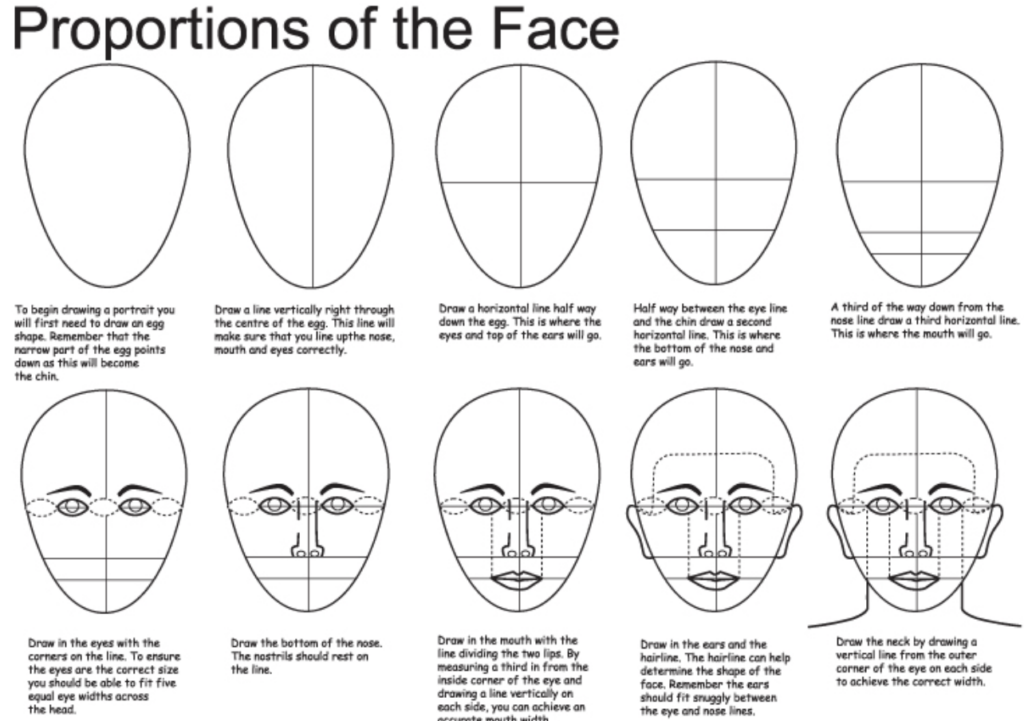
Start with the Basics
Ask: What’s a good shape to draw your head?
Demonstrate drawing a basic shape for your head.
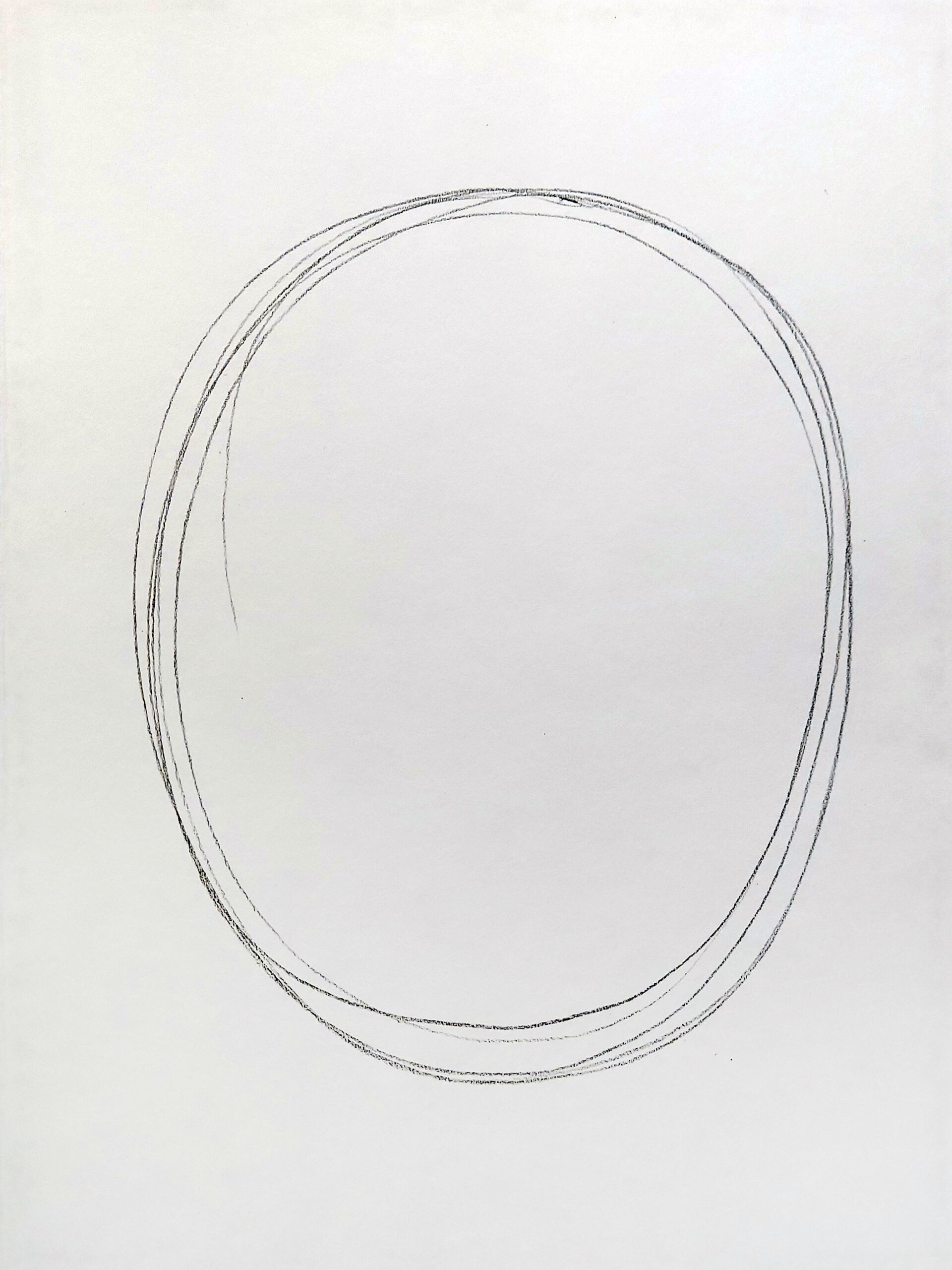
Add Light Guidelines
Demonstrate dividing your head shape in half vertically and horizontally.
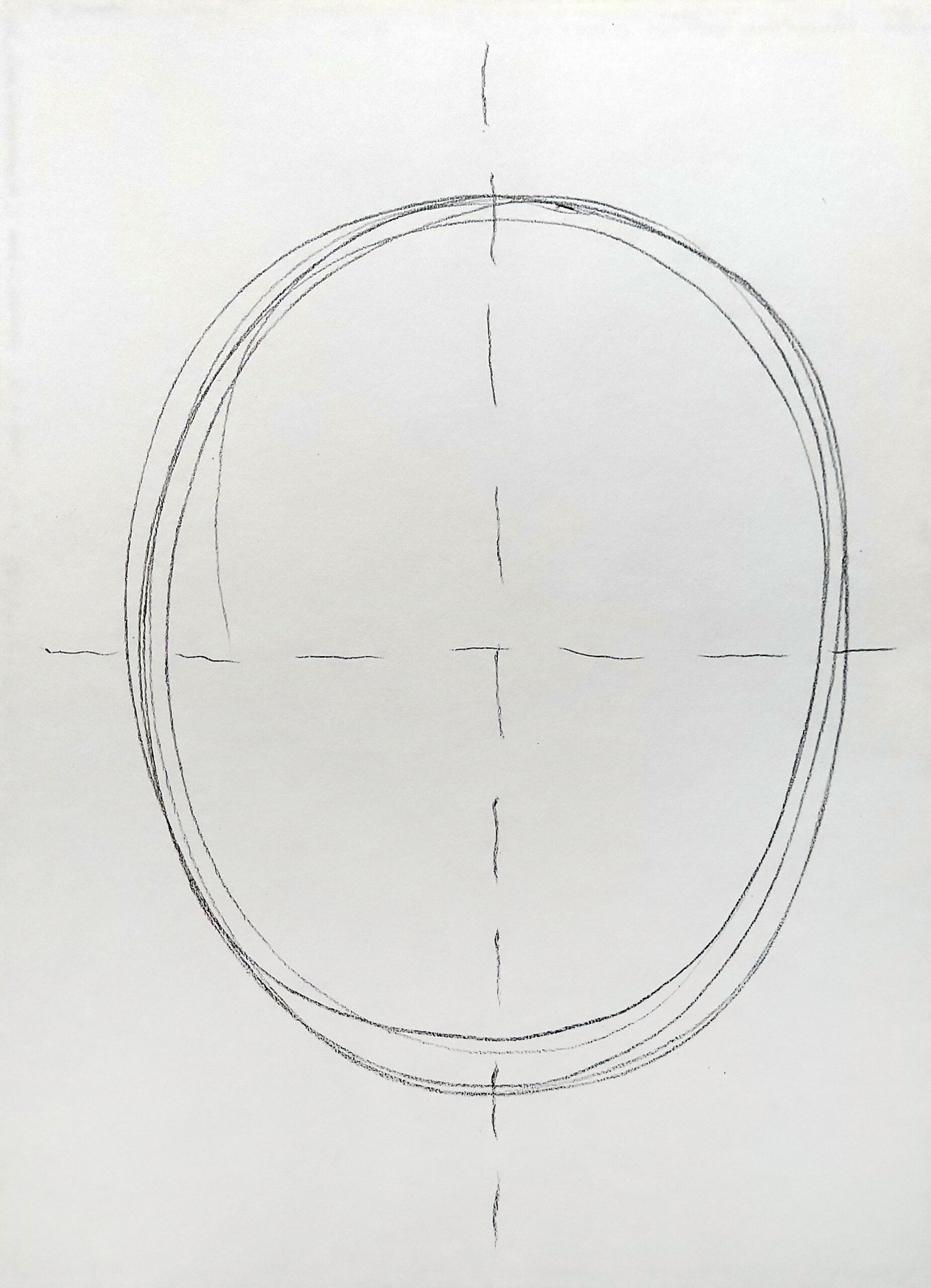
Eyes
Have students look into their mirror.
Ask: Where on the head shape should you draw your eyes?
Ask: How wide is your eye?
Demonstrate using your index finger and thumb to measure the width of your eye.
Ask: How many times can we fit the width of an eye across the front of our face?
I can fit one eyes width across my face about five times
Demonstrate by lightly dividing your face into fifths, by making notches on the horizontal line.
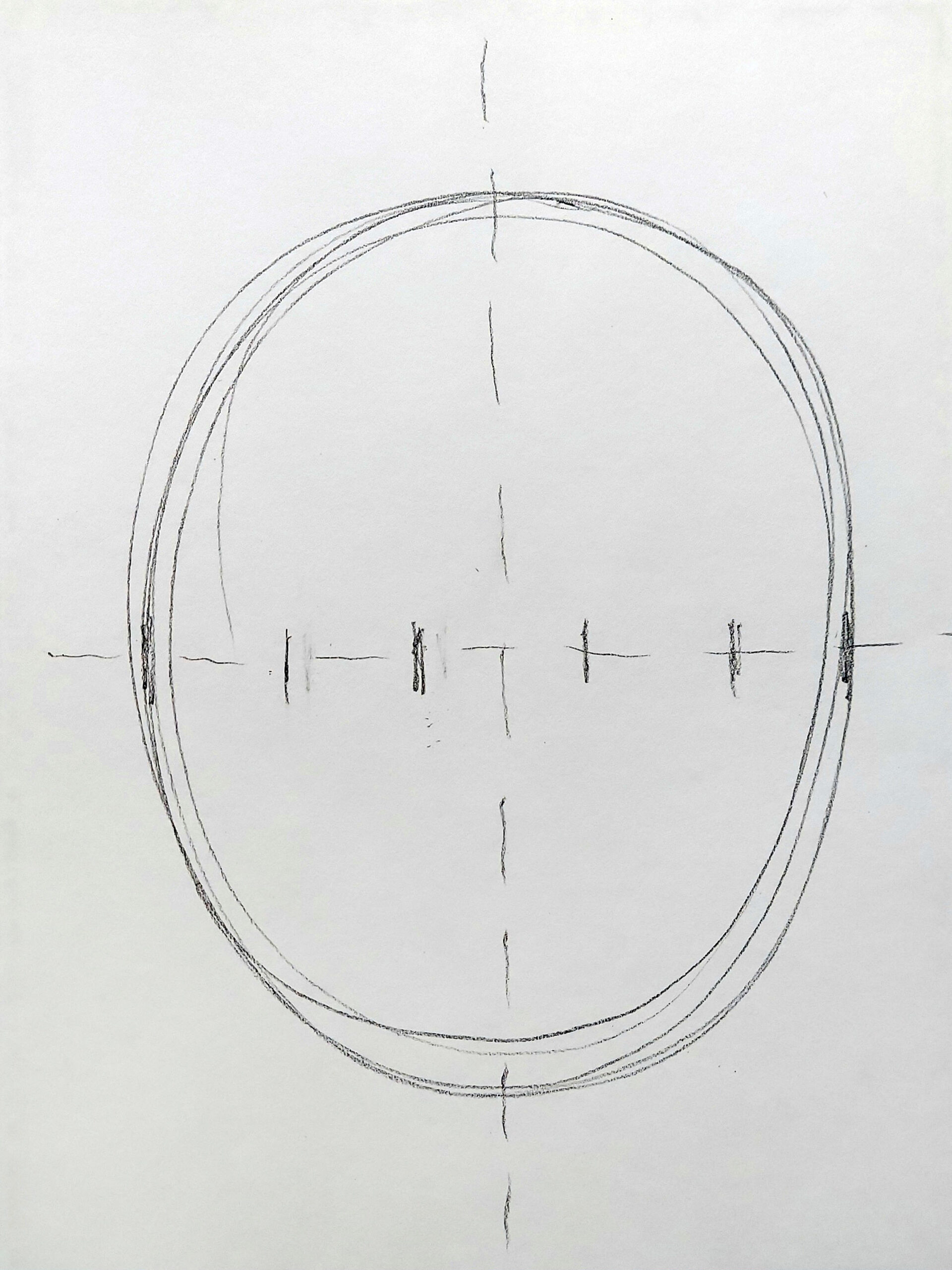
Ask: What are good shapes to draw your eyes?
Demonstrate drawing the basic outline of your eye above the horizontal guidelines in the 2/5 segment and the 4/5 segment.
Remind students it’s okay if their shapes are not perfect but encourage them to try their best to draw them symmetrically.
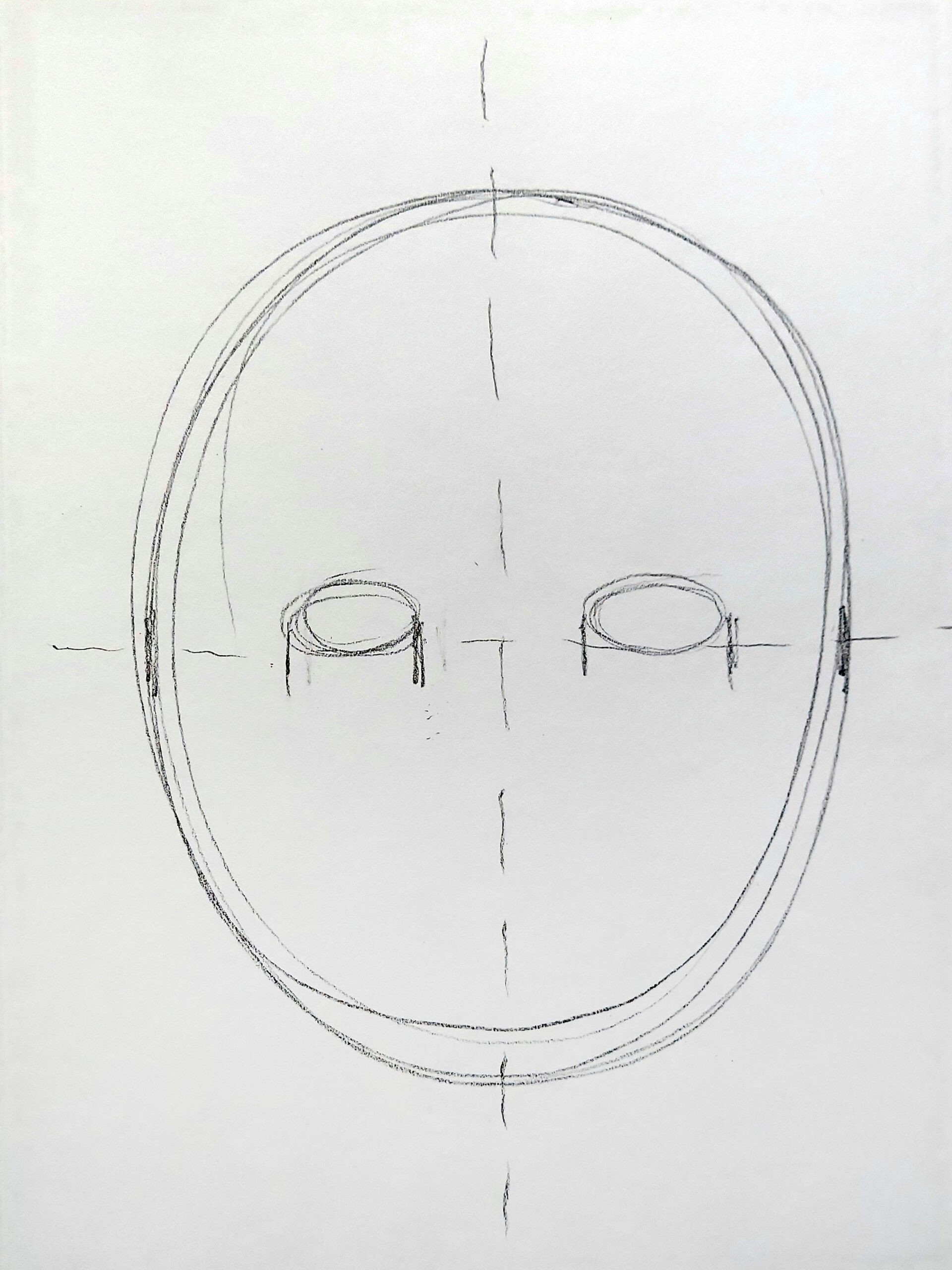
Nose
Ask: Where is your nose in relationship to your eyes?
What shapes can we use to draw it?
Demonstrate dividing the bottom half of your drawing in half again.
Demonstrate drawing a circle on top of your new guideline. (Point out that it doesn’t need to be perfect.)
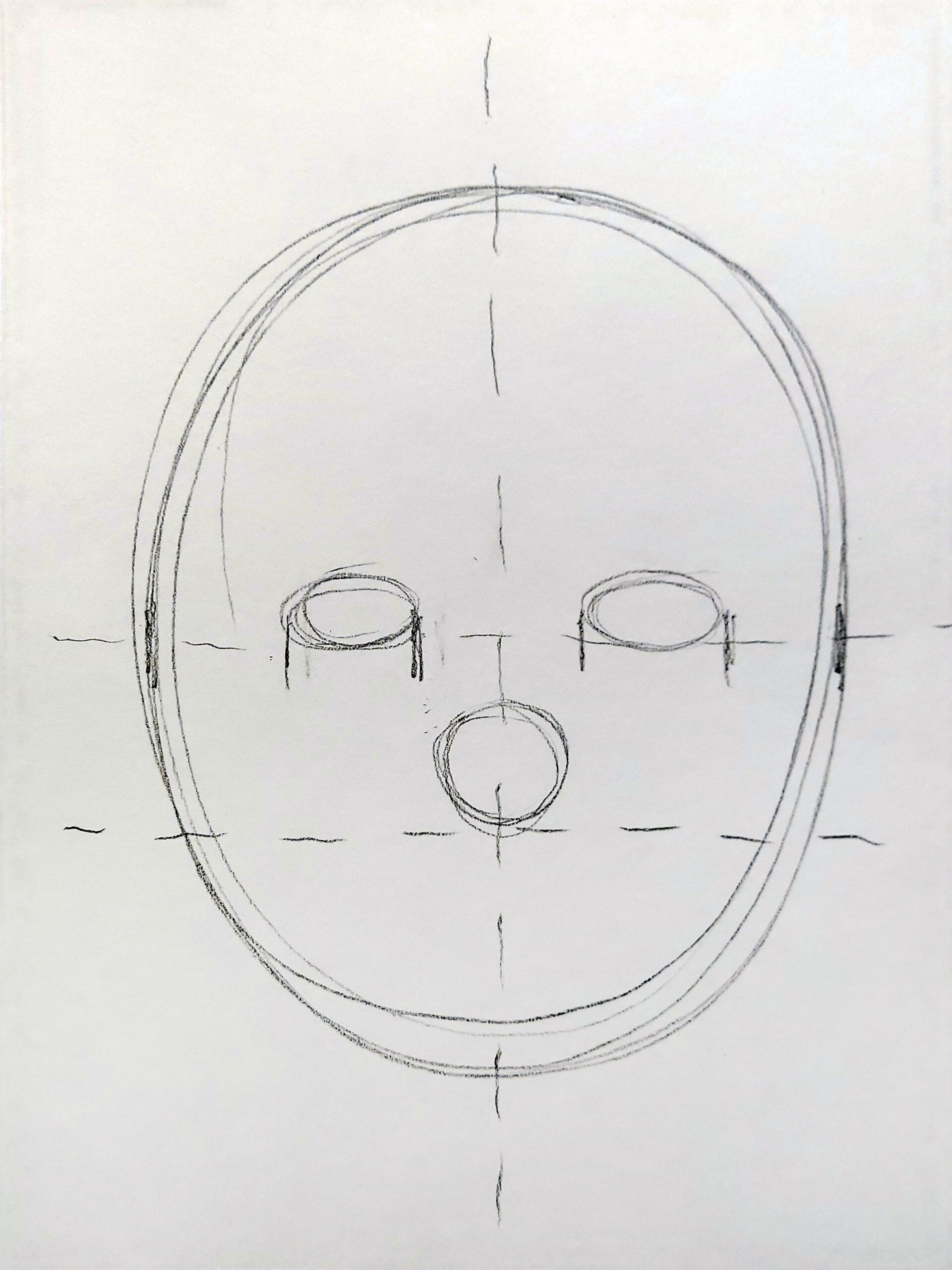
Demonstrate drawing two nostrils.
Ask: Can you see your nostrils?
What shape are they?
How large are they in comparison to your eyes?
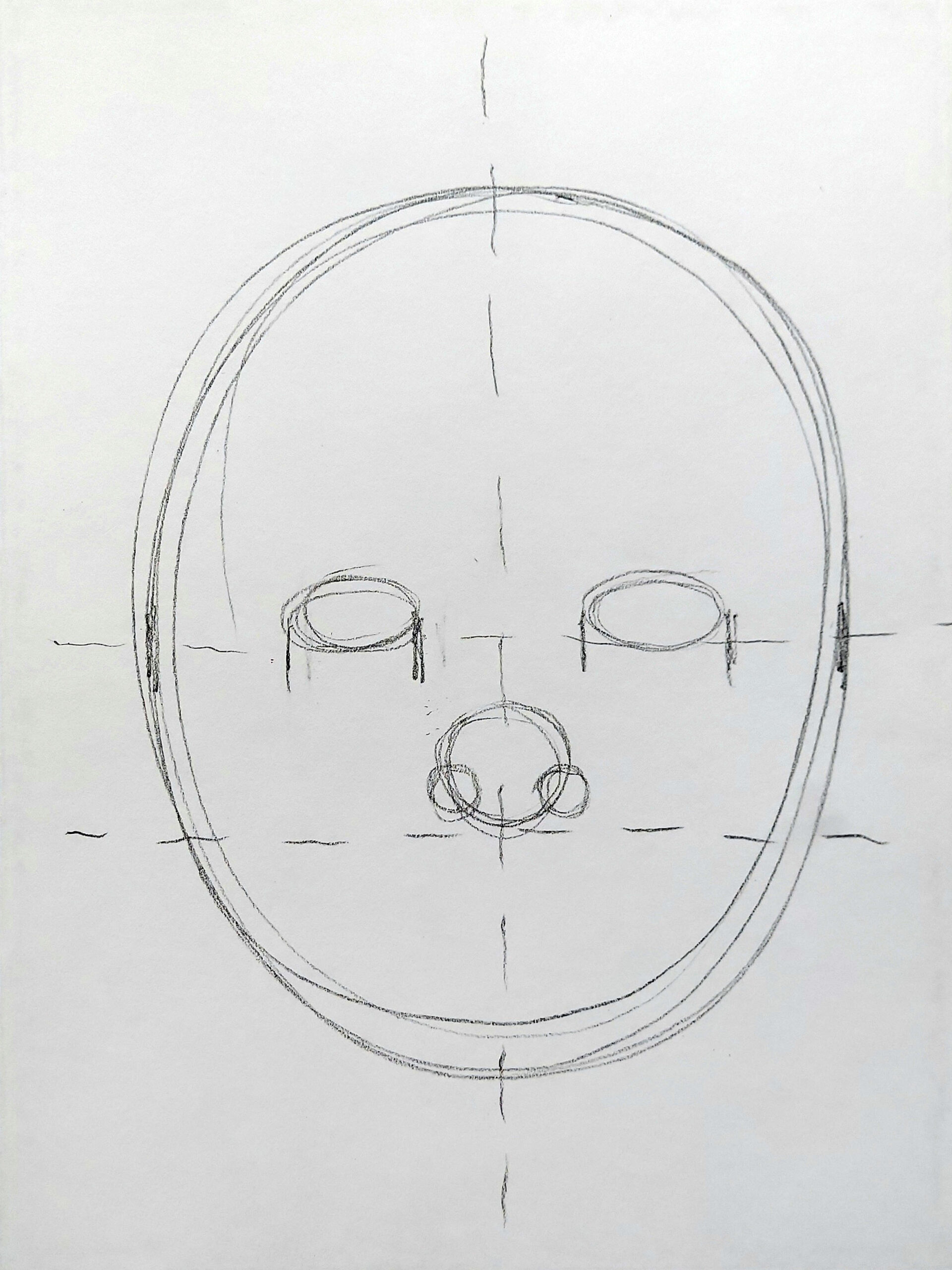
Mouth
Ask: Where is your mouth in comparison to your nose?
What shape can we use to draw it?
Demonstrate dividing the bottom half of your drawing in half again.
Demonstrate drawing an oval on top of your new guideline. (Point out that it doesn’t need to be perfect).
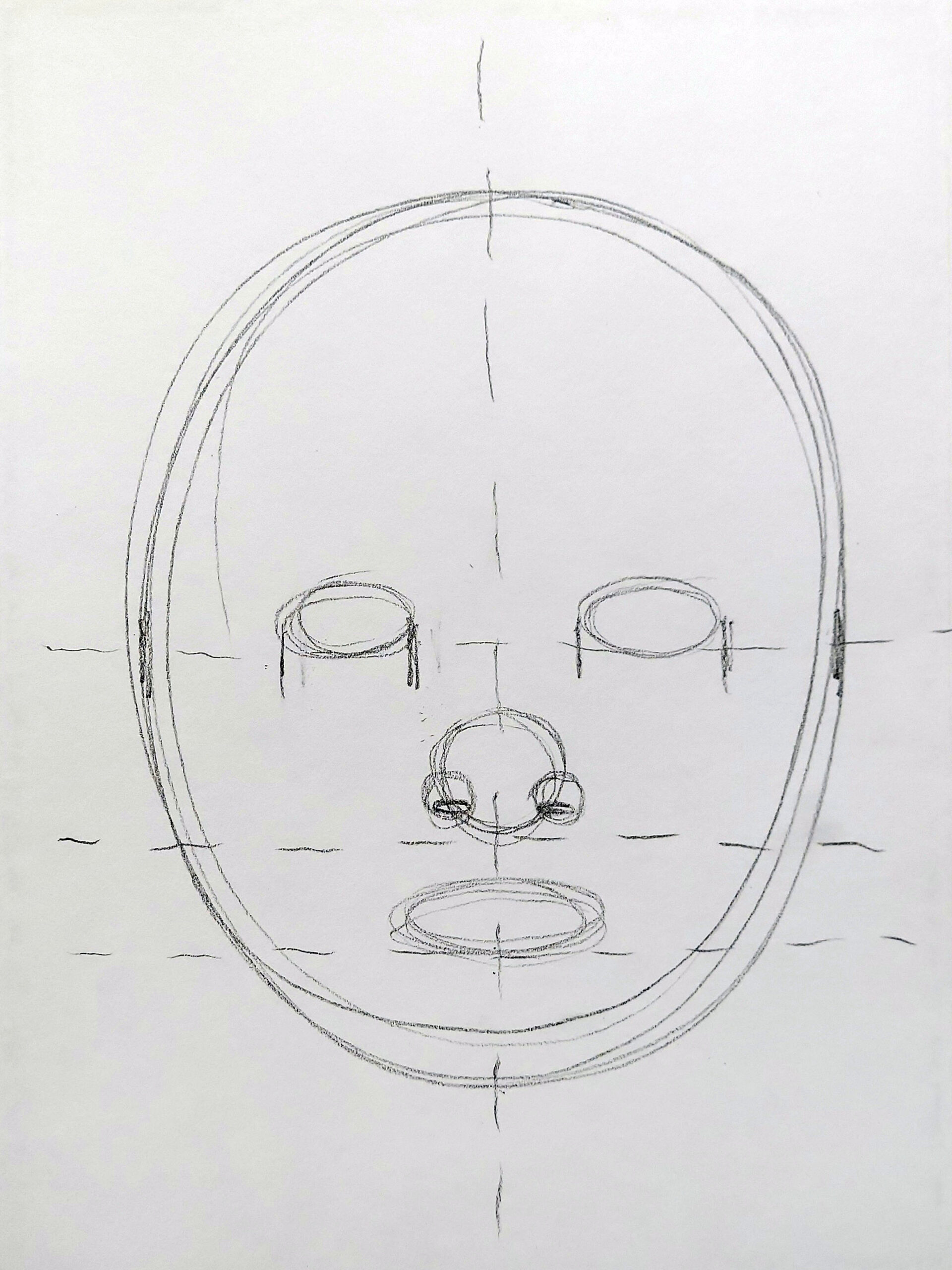
Ears
Ask: Where do you see your ears on your face?
Demonstrate drawing an imaginary line straight out from the outside corner of your eye to the top of your ear and from the bottom of your nose to the bottom of you ear to show the ear’s location.
Demonstrate drawing a shape for your ear on the side of your head in the space between the top of your eyes and the bottom of your nose.
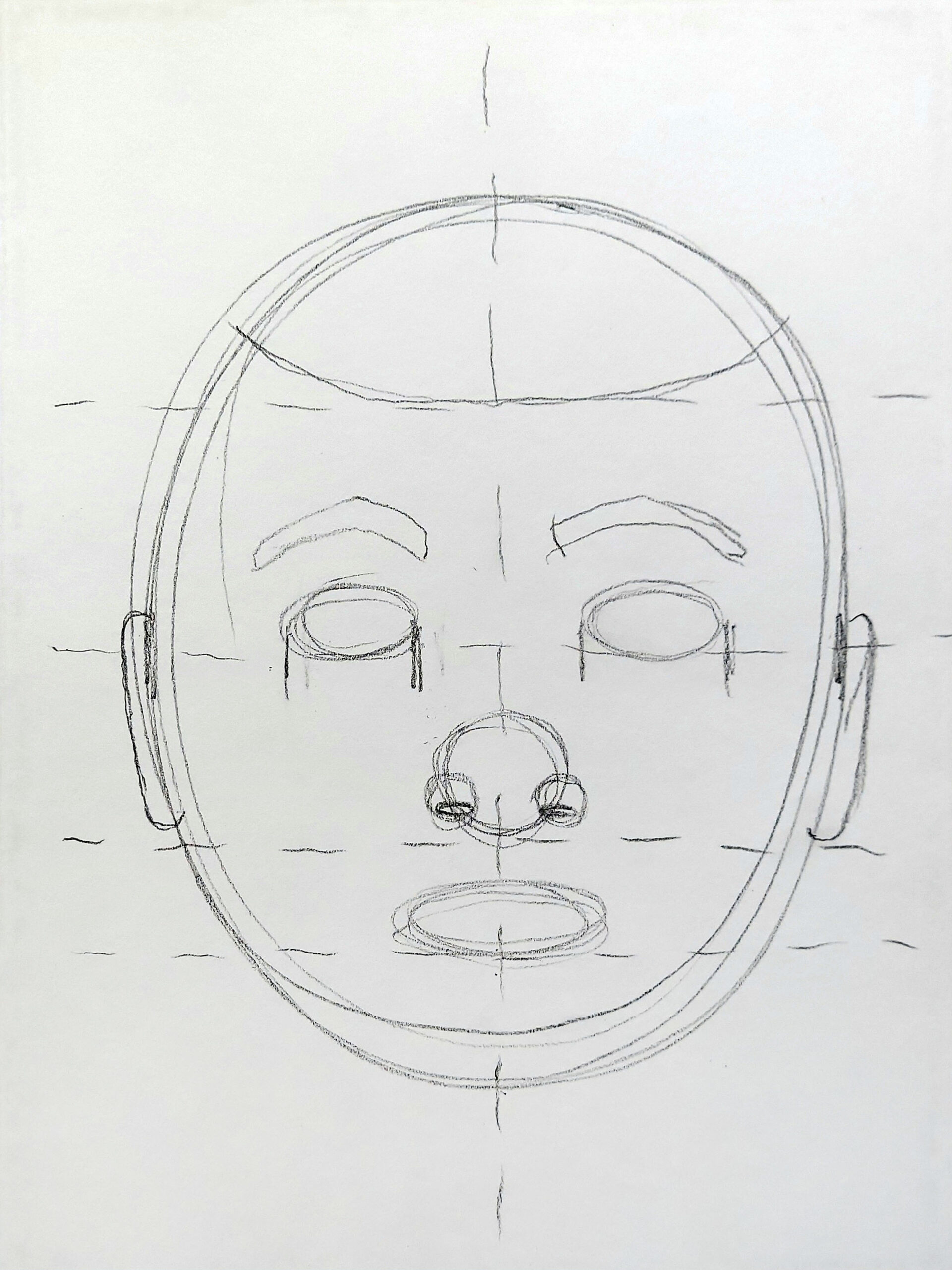
Eyebrows
Ask: Where do you see your eyebrows in relationship to your eyes?
Ask: How much space is in between the top of your eye and the bottom of your eyebrow?
Ask: What shape are your eyebrows?
Have students look in the mirror and trace the shape of their eyebrow with their index finger.
Demonstrate carefully drawing each eyebrow above the top of each eye.
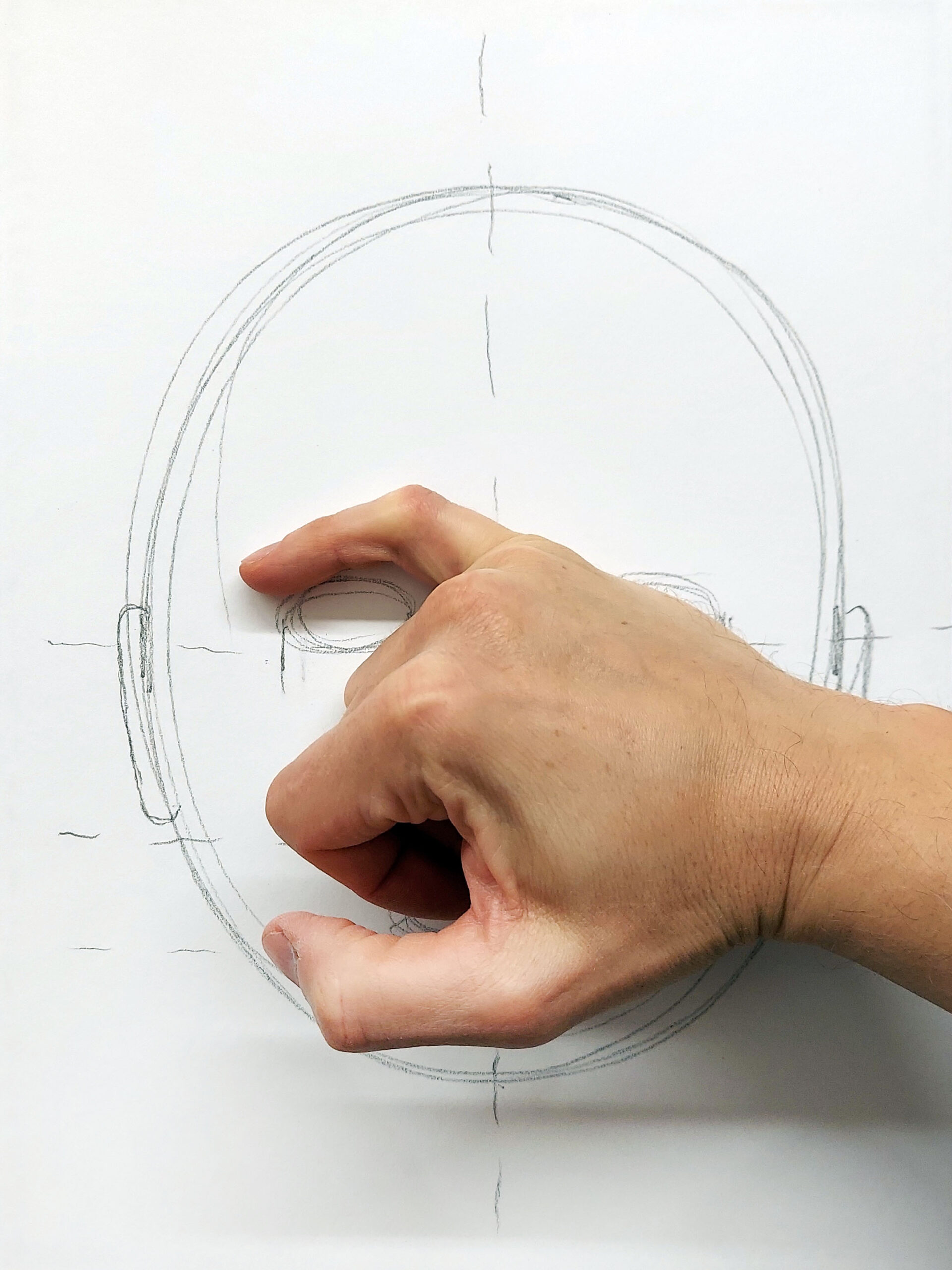
Hairline
Ask: Where do you see your hair?
Demonstrate drawing a guideline between the top of your eyebrow and the top of your head.
Demonstrate tracing your hairline with your index finger.
Ask: What kind of line could you use to represent your hair line?
Demonstrate drawing a line to represent your hairline.

Neck
Ask: Where does your neck connect to your head?
Demonstrate drawing an imaginary vertical line straight down from the outside of your eye.
Ask: Did your outer eye line up with your neck?
Demonstrate drawing two vertical lines under your head to represent your neck.
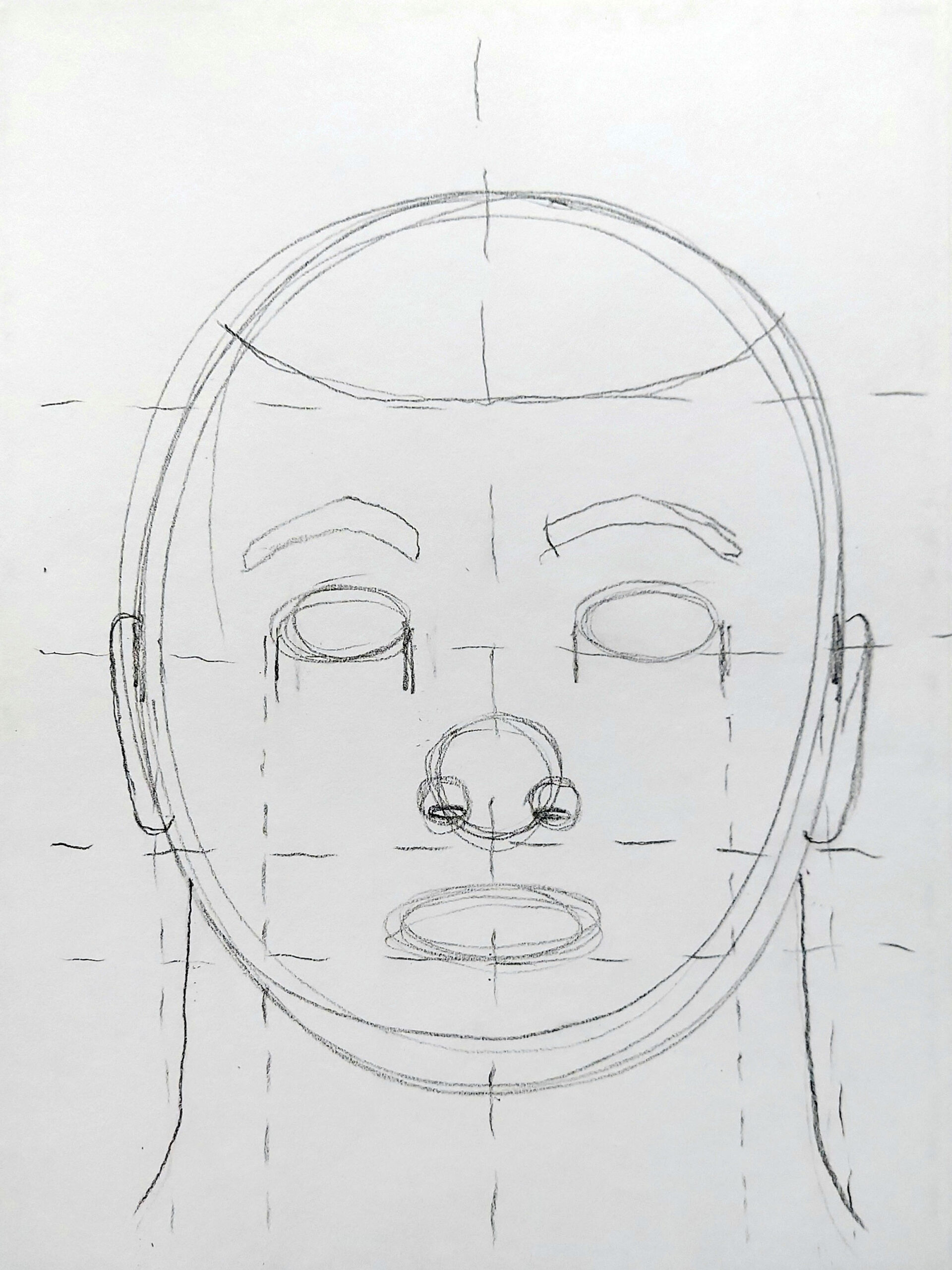
Reflection Questions for Discussion
- What’s one new facial proportion you learned today?
- What’s one thing you plan to adjust in your self-portrait next time?
Vocabulary
Self-Portrait: a portrait of an artist produced or created by that artist
Portrait: an artwork depicting a person, often showing only the face or head and shoulders
Symmetry: the quality of having parts that match each other on opposite sides
Proportion: the size of one thing in relationship to another
